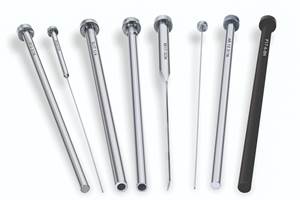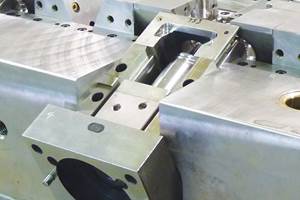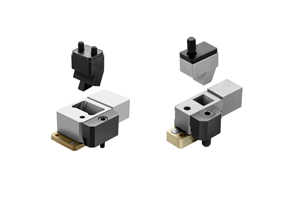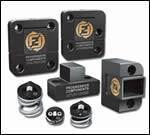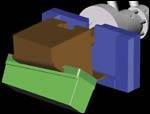Don’t Build the “Same Old Same Mold”
Steps for evaluating the latest mold innovations in order to move along the evolution process.
Years ago, in the days of drafting boards and electric erasers, there was a mold design department where a veteran lead designer welcomed a young new member to the design staff. An engineering grad with sufficient years of mold design experience, the new designer was surprised when on his first mold assignment, he was handed not only the new part print but also prints from a similar job from years back. Instructions were to trace the old tool for the new project ahead. To this the new designer replied, “I thought I joined an engineering department, not a tracing department.”
Although we no longer have to deal with pencil smears and eraser shavings, with CAD there may now be a greater temptation to utilize a past design rather than look at a project with fresh eyes. That tendency is understandable with libraries built up and ever-reducing leadtimes.
However, if that tendency were followed infinitely, competitors’ mold quotes will show standards utilized to deliver performance advantages and make serviceability easier downstream.
Awareness
Most designers are now aware that a large number of standards have been introduced in the last dozen years. There was a paradigm shift from “Why would I want to buy it if I can make it?” to “Why would I want to make it if I can buy it?”
Rather than the only notification about these standards being a field salesperson and trade shows, now press releases, ads and Web sites scream out various new gadgets—every product vying to be included in your next tools.
Announce It
One doesn’t have a lot of R&D time when the stopwatch starts running on a new mold design. So perhaps when there is a breather between hot projects, one can take stock of the type of industries being served and review some of the mold innovations that address that segment, and then pick a couple to review.
No need to go it alone. If a company has scheduled engineering meetings, it can be announced that “Unless someone thinks it’s off base, I’m going to do a little digging to see if a few new methods would be an upgrade.”
Evaluate
How many of us see an item in an ad and then immediately change standards and buy it? Not many. But rather than being intrigued and leaving it as an “FYI”, certain steps can be taken to evaluate an item in order to move along the evolution process.
A quick assessment of risk versus reward can determine if a product is a candidate for evaluation. There’s no need for change solely for the sake of change, so we must ask how some time and money can be saved at the mold build. How can performance be improved for the molder? A quick check on that and some research can follow.
Begin by contacting the supplier with some pointed questions:
• “Is it tested?”
When a mold designer works up a custom widget to solve a particular problem, that item is designed one-up, built one-up and installed one-up. Testing is not involved. However, if a supplier did not properly test an item, there could be huge ramifications in the field due to different interpretations of the product’s application along with varying levels of installation and maintenance skills.
A first question of a supplier would be “How was this product tested?” Optimally, the item was lab tested and exposed to harsher than real world experiences. For example, it is a telling test when a product that cycles every eight seconds for one million shots is cycled at eight times per second for ten million strokes!
However, lab tests alone are not enough. One must ask, “How was this tested in the field?” Sometimes it isn’t until a product is in the field that we learn of some unimagined use, or misuse. Field testing helps a product developer gain insight to creativity that might occur in molding rooms.
• “Who is using it?”
References are good to check, and a supplier should be able to give a reference or two of someone successfully using the product. However, much like personal references during the recruitment process, expect positives!
To dig a little deeper, ask, “When there has been a failure in the field, what has it been? What should I be careful to avoid, or educate my molder about?”
• “Availability?”
Molds have become more mobile, and with tools traveling throughout the world, how is support going to be? Can faraway mold builders buy it within their region? Is there technical support in their language? Can a molder call someone within the region with technical questions or for access to replacement parts?
A supplier can splash country names into its ads or website, but it is fair game to ask for the name of the technical employee for the country where a tool may be built or run.
Gather Materials
If it looks like a potential innovation is beneficial and passes the criteria above, now comes the next step: selling it.
Perhaps, in the old days, one could make a unilateral change. Today it behooves one to involve other designers, one’s supervisor and one’s customer.
The confidence that was gained with a product during the research stage will be contagious—if some materials accompany the pitch. Look to the supplier for more than just catalog pages, but also for assistance with your presentation meeting: sell sheets, a PowerPoint presentation, CAD geometry, animations, and more should be employed. Also, a sample of the product should be arranged for the meeting so that people can hold the item in their hands, and review in-box installation instructions.
Trust Then Verify
After a careful but expedient research phase, at some point the time should be right to get the new innovation within a mold.
Learn the mold designer’s opinion as to how it integrated into the design. Ask the moldmaker how assembly was. And a heads-up to molding may be warranted depending on the item.
Yes it is something different, but keeping one’s eyes on the prize is how things advance.
Make It the Spec
With no red flags after the first tool, and none after a few more, it’s time to call it the spec. For a product that was responsibly introduced to the market by a supplier, it is unlikely that some flaw will rear its head once the tool is well into production. Instead, the downside ramifications of a spec change are often earlier, where the item is vulnerable to an installation or maintenance misinterpretation.
Without a doubt, it is an extra effort to lead a change of spec within one’s organization, as it is easier and safer to plop in geometry from yesteryear. However, those that update their specs methodically advance their company’s position and bottom line, as well as their own value to the organization.
Related Content
Enhance Your Moldmaking Capabilities With These Hot Runner and Mold Component Products
MMT highlights new and improved innovations, including data collection devices, pins, bases, controllers, bushings, nozzles, positioning systems and much more.
Read MoreEjector Pin Selection Guide
A review of materials, treatments and coatings to help determine the proper pins for optimized plastic part ejection.
Read MoreHow to Solve Core Pull Flash and Part Issues
Many mold problems can be solved by simply providing enough preload force on the core to prevent movement.
Read MoreTo the Next Level: Hot Runners, Mold Components Solutions and Services
Moldmaking can be a complex business, but things can be simplified with the right hot runner and mold component technologies and services.
Read MoreRead Next
Eliminating Contamination and Wear in Cleanroom Tooling
A review of considerations that tooling engineers will need to keep in mind to ensure success within cleanroom environments.
Read MoreSimplifying Mold Construction
How to solve your internal thread molding problems with the right core.
Read MoreThe Advantages of New Modular Tech: Maximizing ROI and Minimizing Risk
Proven off-the-shelf modular mold components and complete component systems meet today’s demanding drive for a lean approach.
Read More


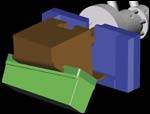
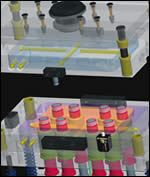














_300x250 1.png;maxWidth=300;quality=90)
.jpg;maxWidth=300;quality=90)





